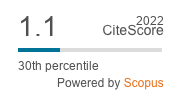El modelo de la "transición demográfica" y el desarrollo reciente de la fertilidad en la población de Alemania Federal
Palabras clave:
Modelo, Transición Demográfica, Desallorro, Fertilidad, Alemania, FederalResumen
El presente articulo analiza a través del ejemplo del desarrollo de la fertilidad reciente en la población de la República Federal de Alemania las características de la función descriptiva, la función clasificadora. la función explicativa y, por último, la función de prognosis del "modelo de la transición demográfica". Reconoce el valor descriptivo y de clasificación que asume el modelo, y discute la posibilidad explicativa y de prognosis que se le atribuye. Difícil resulta prever el comportamiento generativo futuro de la población alemana, ya que las estimaciones dependen de las hipótesis básicas que se aplican en relación a la evolución de la fertilidad, mortalidad y de las migraciones.
Citas
BOLTE, K. M., KAPPE, D. & SCHMID, J. 1980. Bevolkerung. Statistik, Theorie, Geschichte und Politik des Bevólkerungsprozesses, 4. Aufl., Opladen (UTB 986).
BROEK, J. & WEBB, J. 1978. A Geography of Mankind. 3. Aufl., New York.
CALDWELL, J. C. 1976. Toward a Restatement of Demographic Transition Theory. En: Population and Development Review 2, pp. 321-366.
CARLSSON, G. 1966. The Decline of Fertility: Inno¬vation or Adjustment Process. En: Population Studies 20, pp. 149-174.
CHUNG, R.1970. Space - Time Diffusion of the Transition Model: The Twentieth Century Patterns. En: Demko, G. J., Rose, H. M. & Schnell, O. A. (edit.): Population Geography: "A Reader, New York, etc. pp. 220-239.
COALE, A. 1. 1960. The Decline of Fertility in Europe from the French Revolution to World War 11. En: Behrman, S. J., Corsa, L. & Freedman, R. (edit.): Fertility and Family Planning: A World View. Ann Arbor, Mich. pp. 3-24.
DURAND, J. D. 1967. The Modern Expansion of World Population. En: Proceedings Amer. Phil. Soco 111, pp .136-159.
FRANKE, L. & JURGENS, H. W. 1978. (edit): Keine Kinder - Keine Zukunft? Zum Stand der Be vólkerungsforschung in Europa. 2. Auf1., Boppard (Schriftenreihe d. Bundesinst. f. Bev. forschung 4).
GEHRMANN, R. 1979. Einsichten und Kon Sequenzen aus neueren Forschungen zum generativen V erhal¬ ten im demographischen Ancien Régime und in der Transitionsphase. En: Zeitschr. f. Bev. wiss. 5, pp. 455-485.
GRAY, R. H. 1974. The Decline of Mortality in Ceylon and the Demographic Effects of Malaria Control. En: Population Studies 28, pp. 205-229.
GRIGG, D. 1982. Modern Population Growth in Historical Perspective. En: Geography 67, pp. 97 -108.
HAJNAL, J. 1965. European Mariage Patterns in Perspective. En: Glass, D. V. & Eversley, D.E.C. (edit.): Population in History. London, pp. 101-143.
HAUSER, J. A. 1974. Bevólkerungsprobleme der Dritten Welt. Bern/Stuttgart (UTB 316).
HOHN, C. 1979. Bedeutung und Ergebnisse von Mo¬ dellrechnungen zue Bevolkerungsentwícklung. En: Schriftenr. d. Bundesmin. f. Jugend, Familie u. Gesundheit 63, Stuttgart, pp. 95-112.
KAUFMANN, F. X. 1975. (edit): Bevolkerungsbewegung zwischen Quantitat und Qualitat, Beitrage zum Problem einer Bevolkerungspolitik in industriellen Gesellschaften. Stuttgart.
KNODEL, J. E. 1977. Family Limitation and the Fertility Transition: Evidence from the Age Patterns of Fertility in Europe and Asia. En: Population Studies, 31, pp. 219-249.
LESTHAEGHE, R. J. 1977. The Decline of Belgian Fertility, 1800-1970. Princeton, N. J.
MACKENROTH, G. 1953. Bevólkerungslehre, Theorie, Soziologie und Statistik der Bevólkerung, Berlin, etc.
MACKENSEN, R. & Wewer, H. 1973. (edit): Dynamik der Bevolkerungsentwícklung. Strukturen - Be¬ dingungen - Folgen. München.
MARSCHALCK, P. 1979. Zur Theorie des demographischen Übergangs. En: Schriftenreihe d. Bundesmin. f. Jugend, Familie u. Gesundheit 63, Stuttgart, pp. 43-60.
MCKEOWN, T. 1976. The Role of Medicine: Dream, Mirage of Nemesis? London.
MUNZ, R. 1980. Zur Entwicklung der Weltbevolkerung und zu den Ergebnissen des World Fertility Survey. En: Zeitschr. f. Bev. wiss. 6, pp. 245-254.
NOTESTEIN, F. W. 1945. Population - the Long View. En: Schultz, T. W. (edit.): Food for the World. Chicago, pp. 36-57.
OMRAN. A. R. 1971. The Epidemiologic Transition. A Theory of the Epidemiology of Population Change, En: Milbank Memorial Fund Quarterley 49, pp. 509-538.
PRESTON, S. H. 1975. The Changing Relation Between Mortality and Level of Economic Development. En: Population Studies 29. pp. 231-248.
RAZZELL, P. 1977. The Conquest of Smallpox: The Impact of Inoculation on Smallpox Mortality in Eighteenth Century Britain. Firle, Sussex.
ROMANIUK, A. 1980. Increase in Natural Fertility During the Early Stages of Modernization: Evi¬ dence from an African Case Study, Zaire. En: Population Studies 34 , pp . 293-310.
RUCKERT, G. R. 1980. Bericht und Stellungnahme zur World Fertility Survey-Konferenz vom 7. bis 11. Juli 1980 in London. En: Zeitschr. f. Ber. wiss.6, pp. 433-438.
SCHWARZ, K. 1979. Regionale Unterschiede der Geburtenhiiufigkeit. En: Schriftenreihe d. Bundesmin. f. Jugend, Familie u. Gesundheit 63, Stuttgart, pp. 155-168.
SEIVER, D. A. 1975 Recent Fertility in Mexico: Measu¬ rement and Interpretation. En: PopuJation Studies 29, pp. 341-345.
THOMPSON, W. S. 1929. Population. En: Amer. Journal of Sociology 34, pp. 959-975.
WALLE, E. VAN DER & KNODEL, J. 1980. Europe's Fertility Transition: New Evidence and Lessons for Today's Developing World. En: Population Bulletin 34, No6, Washington D.C.
WINGEN, M. 1975. Grundfragen der Bevólkerungspolitik. Stuttgart, etc. (Urban Taschenbücher 509).
WITTHAUER K. 1969. Verteilung_ und Dynamik der Erdbevólkerung, En: Peterm. Geogr . Mitt. , Erg. heft 272.
WOODS, R. 1979. Population Analysis in Geography. London.








